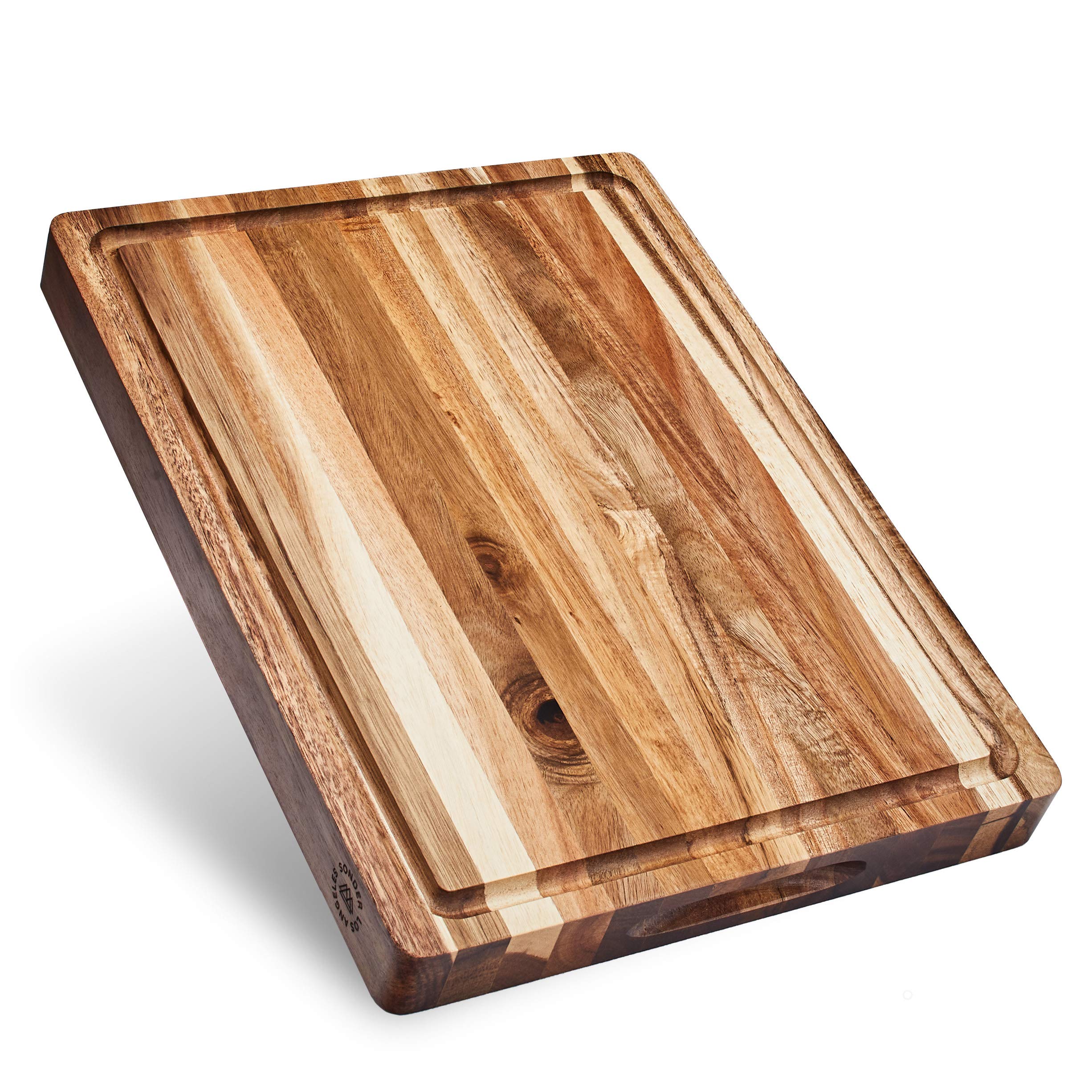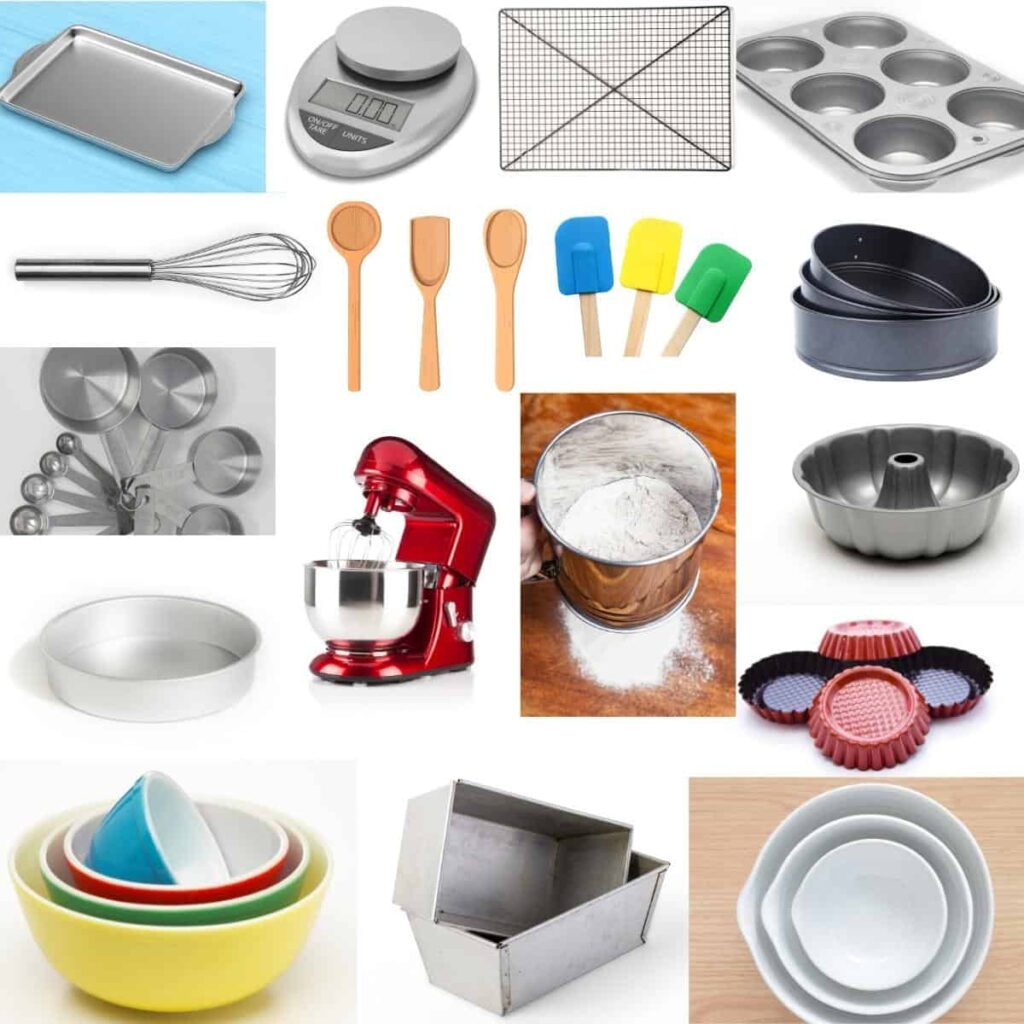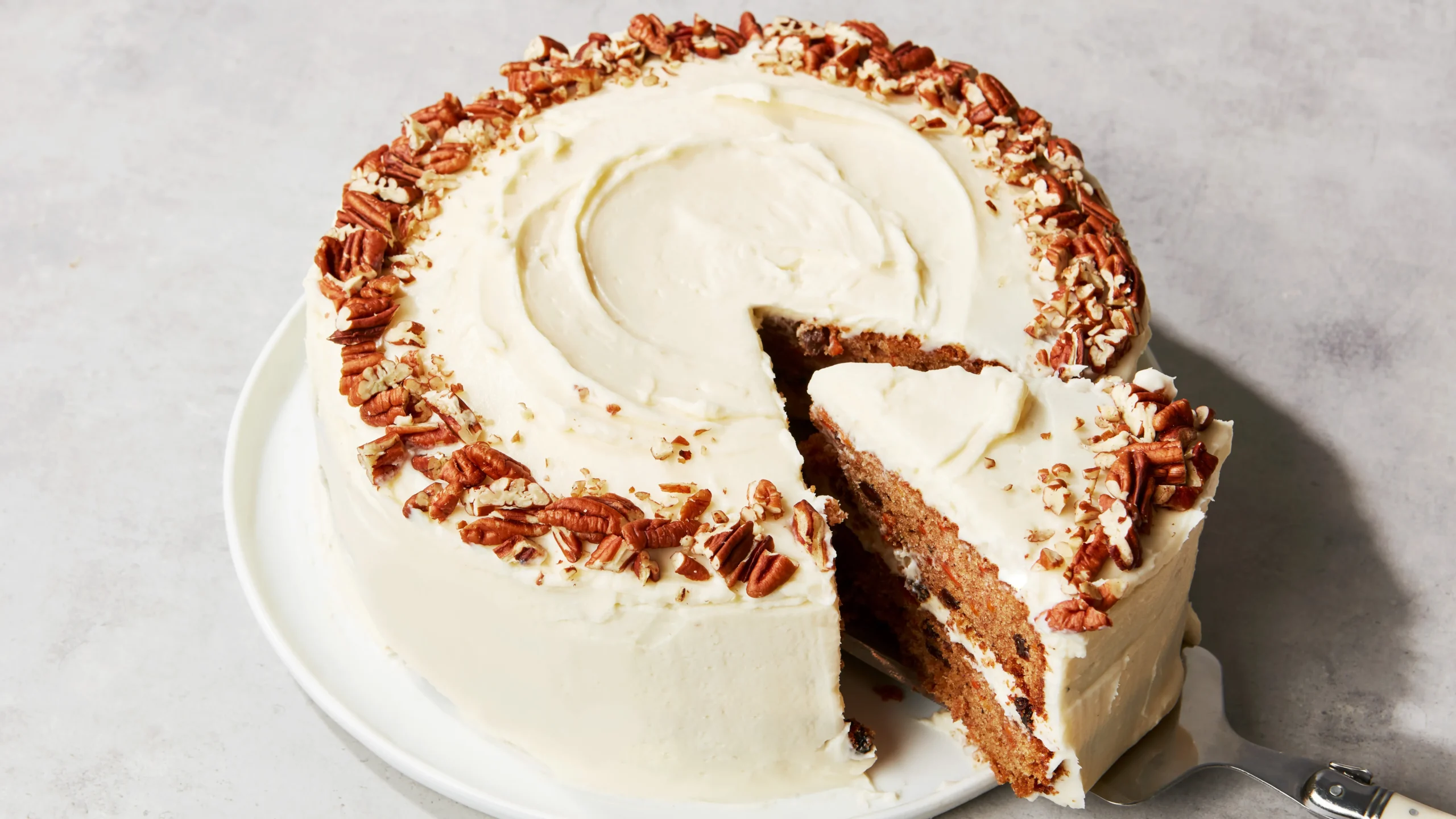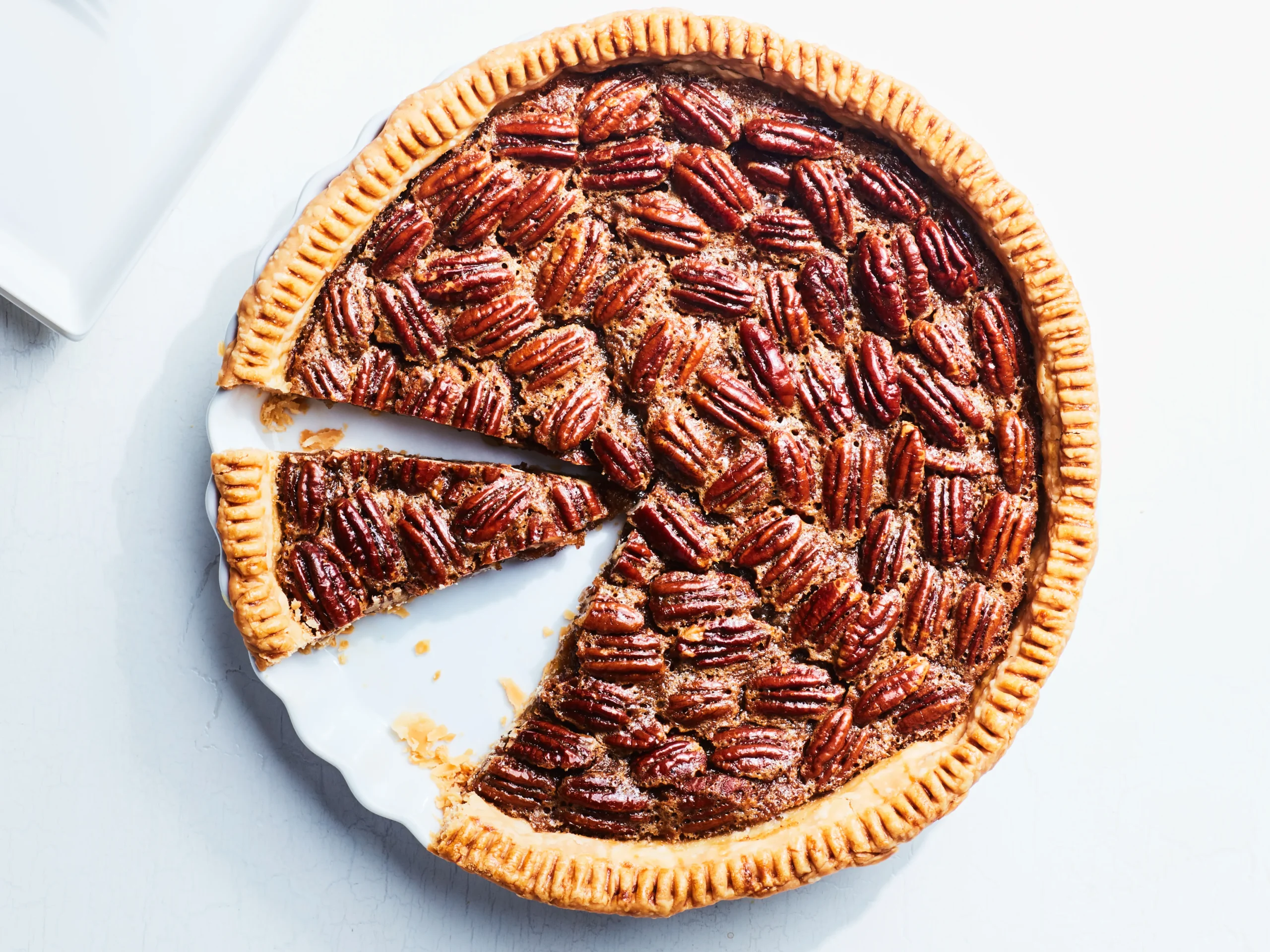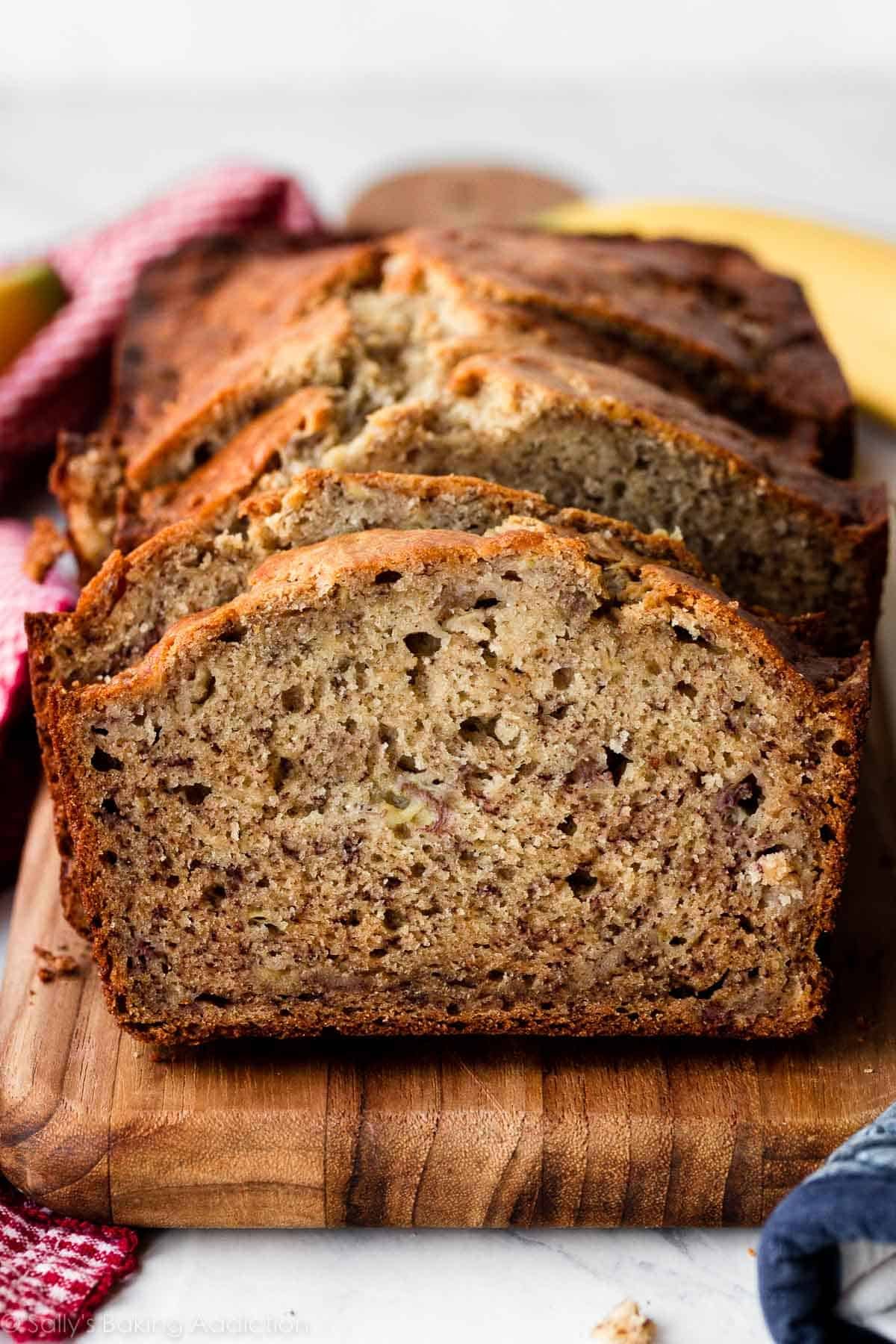A cutting board is a flat surface used for cutting food. Made from various materials like wood or plastic, it provides a stable and safe work area for slicing and dicing ingredients.
The right cutting board can extend the life of your knives and keep your kitchen hygienic. Whether you’re a professional chef or a home cook, a high-quality cutting board is an essential tool in any kitchen. This article will explore the different types of cutting boards available, their benefits and drawbacks, and tips for choosing the best one for your needs.
From bamboo to composite materials, we’ll cover it all so you can make an informed decision. So, let’s dive in and find the perfect cutting board for your culinary adventures.
Table of Contents
:max_bytes(150000):strip_icc()/Chop-Safely-FT-BLOG0223-da445232eb034a8d87e3098cbfbb88a7.jpg)
Credit: www.foodandwine.com
Benefits Of Using A Cutting Board
Using a cutting board is an essential practice for anyone who loves to cook. Not only does it provide a convenient surface for chopping, slicing, and dicing, but it also offers a range of benefits that contribute to a more efficient, hygienic, and safe food preparation process. In this article, we’ll explore the various advantages of using a cutting board and why it should be an indispensable tool in every kitchen.
Prevents Knife Dulling
One of the key benefits of using a cutting board is that it helps prevent knife dulling. When you cut or chop ingredients directly on your countertop surface, it can cause the blade of your knife to become blunt rapidly. However, a cutting board provides a softer and more forgiving surface, reducing the likelihood of your knives losing their sharpness quickly. By saving you from the frustration and expense of constantly sharpening your knives, a cutting board ultimately prolongs the lifespan of your kitchen tools and helps you achieve cleaner, more precise cuts.
Reduces Cross-contamination
Cross-contamination is a major concern in any kitchen. When raw meats, poultry, or fish come into contact with other foods or surfaces, harmful bacteria and pathogens can spread, leading to foodborne illnesses. By using a cutting board, you create a dedicated space for cutting different types of ingredients separately, minimizing the risk of cross-contamination. This simple yet essential practice promotes food safety and helps protect the health of you and your loved ones.
Preserves Countertop Surfaces
Your countertop is an investment that deserves to be preserved. Cutting ingredients directly on your countertop can lead to scratches, nicks, and unsightly marks that can mar the appearance of your kitchen. However, by using a cutting board, you create a protective barrier between your sharp knives and the delicate surface of your countertop. This not only keeps your countertop looking pristine but also saves you from the expenses of potential repairs or replacements in the future.
Enhances Food Safety
When it comes to food safety, every precaution counts. Using a cutting board enhances food safety by providing a clean and hygienic surface for preparing food. Unlike countertops that may harbor bacteria from previous food preparation, a cutting board can be easily cleaned with hot soapy water or placed in the dishwasher. Regularly sanitizing your cutting board further ensures that harmful microorganisms are eliminated, reducing the risk of foodborne illnesses.
Improves Food Preparation Efficiency
In addition to the hygienic and safety benefits, a cutting board also improves the efficiency of your food preparation. With a stable and dedicated surface for chopping, slicing, and dicing, you can work more quickly and with greater precision. This eliminates the need to constantly reposition ingredients or risk accidents due to unstable chopping surfaces. By enhancing your food preparation efficiency, a cutting board allows you to enjoy a smoother and more enjoyable cooking experience.
Different Types Of Cutting Boards
When it comes to cutting boards, there are several different types available on the market. Each type has its own unique features and benefits. In this article, we will explore the various types of cutting boards and their pros and cons.
Wooden Cutting Boards
Wooden cutting boards are loved by both professional and home chefs for their durability and natural beauty. Made from various hardwoods such as maple, walnut, or teak, these boards are known for their long-lasting quality. They provide an excellent surface for cutting, chopping, and slicing.
- Pros of Wooden Cutting Boards:
- Durable and long-lasting.
- Helps to preserve the sharpness of knives.
- Has a natural self-healing ability to some extent.
- Provides an aesthetic appeal to any kitchen.
- Cons of Wooden Cutting Boards:
- Require regular maintenance, such as oiling, to prevent cracking and warping.
- Not dishwasher safe.
- May absorb odors and stains if not properly cared for.
Plastic Cutting Boards
Plastic cutting boards are widely used in both residential and commercial kitchens. Made from materials like polyethylene or polypropylene, these cutting boards are lightweight, affordable, and easy to clean. They come in various colors, enabling you to designate specific boards for different types of food to prevent cross-contamination.
- Pros of Plastic Cutting Boards:
- Easy to clean and sanitize.
- Lightweight and easy to maneuver.
- Available in a variety of sizes and colors.
- Less prone to absorbing odors or stains compared to wooden boards.
- Cons of Plastic Cutting Boards:
- Can develop knife marks and scratches over time.
- May harbor bacteria in deep knife grooves.
- Not as aesthetically pleasing as wooden or bamboo boards.
Bamboo Cutting Boards
Bamboo cutting boards have gained popularity in recent years due to their eco-friendly nature and natural antimicrobial properties. Bamboo is a fast-growing grass that is easy to harvest sustainably. These cutting boards are known for their strength, hardness, and resistance to knife marks.
- Pros of Bamboo Cutting Boards:
- Eco-friendly and sustainable.
- Resistant to knife marks and scratches.
- Natural antimicrobial properties.
- Lightweight and easy to maintain.
- Cons of Bamboo Cutting Boards:
- Require regular oiling to prevent drying and cracking.
- Not dishwasher safe.
- May absorb strong odors if not properly cleaned.
Glass Cutting Boards
Glass cutting boards are known for their sleek and modern appearance. They offer a smooth and non-porous surface, making them easy to clean and maintain. Glass boards are also heat-resistant, allowing you to use them as trivets for hot pots and pans.
- Pros of Glass Cutting Boards:
- Hygienic and easy to clean.
- Heat-resistant and can double as a trivet.
- Does not absorb odors or stains.
- Provides a stylish and modern look to the kitchen.
- Cons of Glass Cutting Boards:
- Can dull and damage knives due to their hard surface.
- Heavy and can be prone to accidental drops or breakage.
- May cause more noise during cutting compared to other materials.
Composite Cutting Boards
Composite cutting boards are made from a combination of materials, such as wood fibers mixed with resin or plastic. These boards aim to offer the benefits of both wood and plastic cutting boards. They are durable, resistant to knife marks, and easier to maintain than pure wooden boards.
- Pros of Composite Cutting Boards:
- Durable and resistant to warping or cracking.
- Hygienic and easy to clean.
- Less prone to knife marks compared to wooden boards.
- Can withstand dishwasher cleaning.
- Cons of Composite Cutting Boards:
- Not as aesthetically pleasing as natural wood boards.
- May be more expensive compared to other types.
- Can still develop deep knife grooves over time.
Choosing The Right Cutting Board
When it comes to the kitchen, one essential tool that often goes overlooked is the cutting board. A good cutting board is not only a functional surface for chopping, slicing, and dicing but also helps protect your kitchen countertops and keeps your knives sharp for longer. However, with so many options available, it can be overwhelming to choose the right cutting board for your needs. In this guide, we will explore the key factors to consider when selecting the perfect cutting board for your kitchen.
Consider The Material
The material of a cutting board plays a crucial role in both its functionality and durability. Different materials offer distinct advantages and disadvantages, so it’s important to choose the one that best suits your needs. Here are some popular cutting board materials:
| Material | Pros | Cons |
|---|---|---|
| Wood |
|
|
| Plastic |
|
|
| Bamboo |
|
|
Size And Thickness
The size and thickness of the cutting board should be determined by your specific kitchen needs. Consider the available countertop space and the amount of food you typically prepare. A larger cutting board provides more room to work with, accommodating larger ingredients and reducing the risk of food falling off the surface. For portability, a smaller cutting board may be more suitable.
In terms of thickness, a thicker cutting board tends to be more durable and less prone to warping or cracking. It also offers a stable surface for heavy-duty chopping. However, keep in mind that a thicker board may be heavier and take up more storage space.
Maintenance And Durability
When choosing a cutting board, it’s important to consider how easy it is to clean and maintain. Wood and bamboo cutting boards should be hand-washed with warm, soapy water and towel-dried to prevent moisture damage. Plastic cutting boards, on the other hand, can usually be cleaned in the dishwasher. Regular oiling is necessary for wood and bamboo boards to keep them well-conditioned and prevent them from becoming dry or cracked.
Additionally, durability is a key factor to consider. A cutting board should be able to withstand regular use without showing signs of wear and tear. Look for a sturdy construction and quality materials that can withstand heavy chopping and slicing without warping or splitting.
Knife-friendliness
An ideal cutting board should be knife-friendly, meaning it should not dull or damage your knives’ edges. Wood and bamboo cutting boards are known for their ability to absorb the impact of the blade, reducing the risk of premature dulling. Plastic cutting boards, while affordable and easy to maintain, can cause more wear on your knives and require more frequent sharpening.
Design And Aesthetics
While functionality is crucial, the design and aesthetics of your cutting board shouldn’t be overlooked. After all, it’s a kitchen tool you’ll be using frequently, so it’s important to choose one that complements your kitchen décor. Whether you prefer a classic wooden cutting board or a sleek and modern plastic one, selecting a cutting board that matches your style can add to the overall aesthetic appeal of your kitchen.
Proper Cleaning And Maintenance
Proper cleaning and maintenance are crucial to ensure the longevity and safety of your cutting board. By following the right techniques, you can keep your cutting board in excellent condition and reduce the risk of cross-contamination. In this section, we will delve into the various methods for hand washing versus using a dishwasher, cleaning methods for different materials, removing stains and odors, drying and storing, and regular maintenance practices.
Hand Washing Vs. Dishwasher
When it comes to cleaning your cutting board, the debate between hand washing and using a dishwasher is a common one. While the dishwasher may seem like a convenient option, hand washing is generally recommended to ensure thorough cleanliness. Hand washing gives you better control over the cleaning process and allows you to target any stubborn stains or residue that might be missed in the dishwasher.
Here are a few key points to keep in mind while hand washing your cutting board:
- Use hot water and dish soap.
- Scrub the surface with a brush or sponge.
- Pay extra attention to the corners and grooves.
- Rinse well to remove any soap residue.
- Dry the cutting board completely before storing.
Cleaning Methods For Different Materials
Cutting boards come in various materials, such as wood, plastic, bamboo, or glass. Each material requires specific cleaning methods to maintain its quality and hygienic state.
| Material | Cleaning Method |
|---|---|
| Wood | Hand wash with hot water and mild soap. Avoid soaking and sanitize occasionally with hydrogen peroxide or a vinegar solution. |
| Plastic | Hand wash with hot water and dish soap. You can also sanitize by placing it in the dishwasher on the hot setting. |
| Bamboo | Hand wash with hot water and dish soap. Treat with food-grade mineral oil regularly to prevent drying. |
| Glass | Dishwasher-safe, but hand washing is recommended for better maintenance. |
Removing Stains And Odors
Over time, cutting boards can develop stubborn stains and unpleasant odors. To keep your cutting board fresh and clean, try these effective cleaning methods:
- Mix baking soda with water to create a paste and scrub the surface.
- Apply lemon juice or white vinegar to tackle strong odors.
- For tough stains, use a mixture of hydrogen peroxide and dish soap, and let it sit for a few minutes before scrubbing.
Drying And Storing
Thoroughly drying your cutting board after cleaning is essential to prevent mold and bacterial growth. Follow these steps for proper drying and storing:
- Use a clean cloth or paper towel to dry the cutting board thoroughly.
- Avoid air-drying in a humid environment, as it can promote bacterial growth.
- Store the cutting board upright or flat in a well-ventilated area.
- Avoid stacking wet cutting boards, as this can trap moisture and lead to mold.
Regular Maintenance Practices
Regular maintenance plays a vital role in extending the lifespan of your cutting board. Follow these practices to keep it in optimal condition:
- Regularly inspect the cutting board for any signs of damage or wear.
- Apply food-grade mineral oil to wooden or bamboo cutting boards to prevent drying and cracking.
- Resurface wood cutting boards occasionally to remove deep cuts and grooves.
- Sanitize the cutting board with a diluted bleach solution to ensure proper hygiene.
Extending The Lifespan Of Your Cutting Board
Investing in a high-quality cutting board is essential for every kitchen. Not only does it provide a safe and sturdy surface for all your chopping needs, but it also plays a crucial role in maintaining the sharpness and longevity of your knives. To ensure that your cutting board lasts for years to come, it’s important to follow a few simple maintenance tips. By avoiding heat exposure, preventing excessive moisture, minimizing impact and cutting marks, using different sides of the board, and applying regular oil treatments, you can extend the lifespan of your cutting board and keep it in pristine condition.
Avoiding Heat Exposure
Cutting boards are not meant to withstand high temperatures. Exposing your cutting board to heat can cause warping and ultimately shorten its lifespan. Avoid placing hot pots, pans, or dishes directly on your cutting board. Instead, use heat-resistant trivets or cooling racks to protect the surface. It’s also wise to keep your cutting board away from direct sunlight, as extended exposure to UV rays can lead to discoloration and degradation.
Preventing Excessive Moisture
Excessive moisture can be detrimental to the lifespan of your cutting board. When wood absorbs too much water, it can cause swelling, warping, and even mold growth. To prevent this, always ensure that your cutting board is completely dry before storing it. After each use, wipe down the surface with a clean cloth or towel to remove any moisture. Additionally, avoid submerging your cutting board in water or placing it in the dishwasher, as these practices can accelerate the deterioration process.
Minimizing Impact And Cutting Marks
While cutting and chopping, it’s important to minimize the impact on your cutting board to avoid unnecessary damage. Using a cutting board made of a durable material, such as bamboo or hardwood, can help withstand the impact of sharp knives. It’s also advisable to use a cutting board with a thickness of at least one inch, as this provides better resistance to cutting marks. To further protect your cutting board, consider using a knife-friendly cutting surface, such as a silicone or plastic mat, for particularly delicate or slippery ingredients.
Using Different Sides Of The Board
Rotating and using both sides of your cutting board can help distribute wear and tear evenly, prolonging its lifespan. This practice prevents excessive cutting marks on a single side and ensures that the board remains balanced. By simply flipping your cutting board after each use, you can maintain its smooth and unmarked surface for longer periods. Remember to clean both sides of the board thoroughly to remove any food particles or stains before flipping it over.
Applying Regular Oil Treatments
Regular oil treatments are essential for maintaining the health and integrity of your cutting board. Applying food-grade mineral oil or specialized cutting board oil creates a protective barrier that helps prevent moisture absorption and drying out. To apply the oil, generously coat the surface of the cutting board with a clean cloth or paper towel, allowing it to penetrate the wood for a few hours or overnight. Wipe off any excess oil before using the cutting board again. Aim to repeat this treatment every few months or when the wood starts to appear dry or dull.
Frequently Asked Questions Of Cutting Board
How Do I Clean A Wooden Cutting Board?
To clean a wooden cutting board, gently scrub it with hot water, mild dish soap, and a soft brush. Rinse it thoroughly, then dry it with a clean towel. Avoid soaking the board in water or using abrasive cleaners, as this can damage the wood.
Regularly apply a food-safe oil, such as mineral oil, to moisturize and protect the board.
Can I Put My Wooden Cutting Board In The Dishwasher?
No, wooden cutting boards should not be put in the dishwasher. The high heat and moisture can cause the wood to warp or crack. It is best to clean the board by hand with hot water, mild soap, and a soft brush.
Proper care and maintenance will help prolong the life of your wooden cutting board.
What Is The Best Type Of Wood For A Cutting Board?
Hardwoods are the best choice for cutting boards because they are durable and less likely to scratch. Maple, walnut, and cherry are popular options due to their sturdiness and beautiful grain patterns. Avoid using softwoods like pine or bamboo, as they can easily become damaged and harbor bacteria.
How Often Should I Oil My Wooden Cutting Board?
It is recommended to oil your wooden cutting board once a month or as needed. Over time, the wood can dry out and lose its natural moisture. Applying a food-safe oil, such as mineral oil or coconut oil, helps to prevent cracks, warping, and the growth of bacteria.
Simply apply the oil in a thin, even layer and leave it to soak in overnight.
Conclusion
A quality cutting board is an essential tool in every kitchen. With its durable and hygienic properties, it ensures a safe and efficient cooking experience. Whether you prefer a wooden or plastic board, it is important to choose one that is easy to clean and maintain.
So invest in a reliable cutting board and elevate your culinary skills to new heights. Happy cooking!
